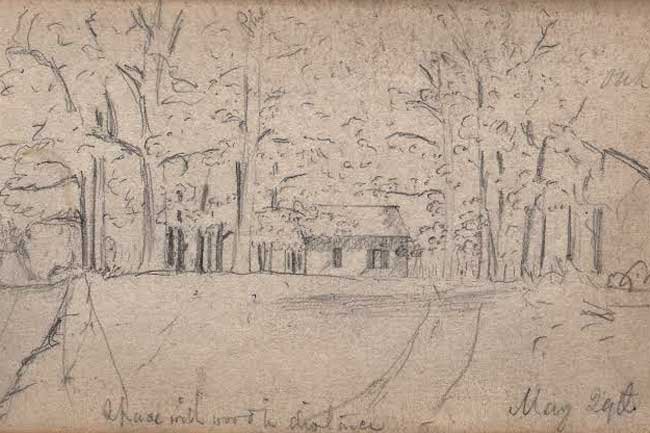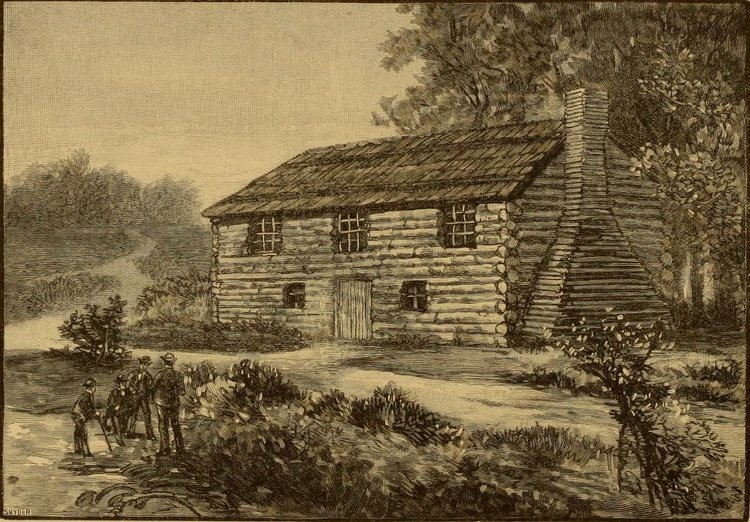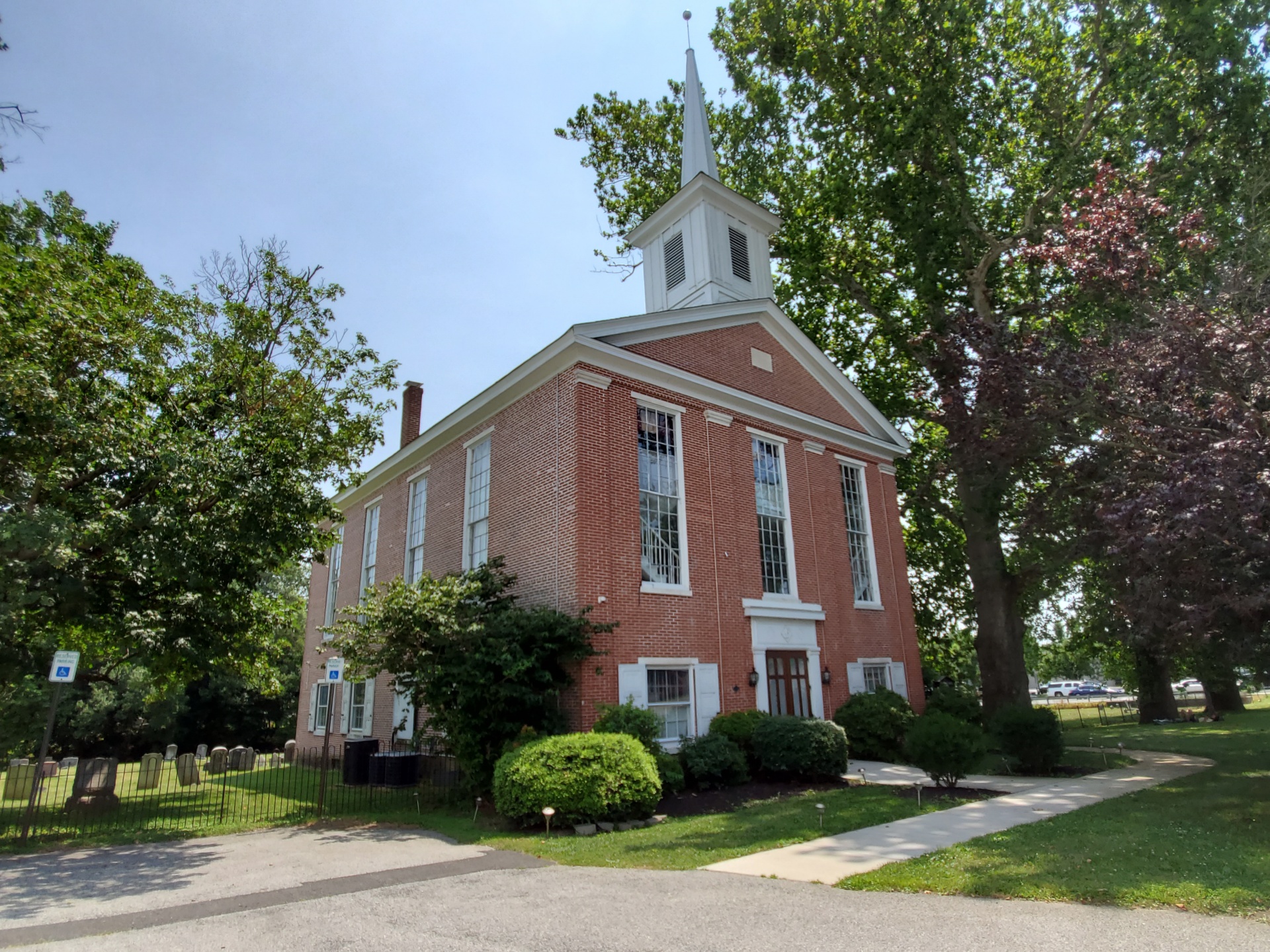Receive our blog posts in your email by filling out the form at the bottom of this page.
What has been like a revelation to me in my research was, finding out the extensive use of Tokens in the United States. All the early Presbyterian churches appear to have used them. — Robert Shiells, The Story of the Token as Belonging to the Sacrament of the Lord's Supper (1891), p. 150
Colonial American Presbyterianism, utilizing the Westminster Directory of Presbyterian Worship until 1788, relied much on Scottish Presbyterian traditions which included both communion seasons and tokens. These important features of simple Presbyterian worship were also associated with notable revivals, including both the Great Awakening and the Second Great Awakening. “The communion seasons in Virginia, as wherever the Presbyterian Church was planted, were seasons of revival.” (Mary McWhorter Tenney, Communion Tokens: Their Origin, History, and Use (1936), p. 87). Leigh Eric Schmidt writes:
With the transplantation of Presbyterianism to the American colonies came Old World ways of organizing worship and devotion. The sacramental occasion, as one of the most prominent features of the evangelical Presbyterian tradition, was soon re-created in America. In New England, for example, enclaves of Presbyterian immigrants almost immediately staged sacramental occasions fully reminiscent of Scotland and Ulster….
In the middle colonies, where Presbyterian immigration was much heavier than in New England, sacramental occasions were proportionally larger and more pronounced. The communion seasons — prevalent, powerful, and well attended — figured prominently in the religious life of the Presbyterian immigrants throughout the region [Schmidt, Holy Fairs: Scottish Communions and American Revivals in the Early Modern Period (1989), pp. 53-54].
Julius Melton also notes this important feature of early American Presbyterian worship as well as its transatlantic nature:
One especially prominent aspect of the Presbyterian’s worship experience in the colonies was the “sacramental season.” This was the practice, inherited from Scotland, of placing the infrequent celebrations of the Lord’s Supper within a series of services — days of fasting, sermons, examination of communicants and singing for which crowds would gather from an entire region. After dwelling at length on their sins and Christ’s work of salvation, Presbyterian drew near to receive the sacrament with great awe [Melton, Presbyterian Worship in America: Changing Patterns Since 1787 (1967, 2001), p. 16].
The Great Awakening was at least in part built on the foundation of sacramental seasons of revival. This was true for the Tennents (William, Sr., William Jr., Gilbert, and John included), some of whom contributed to a famous collection of Sermons on Sacramental Occasions by Divers Ministers (1739).
Gilbert Tennent was born into a family of Scots living in Ulster, in the northeast of Ireland. By the close of the seventeenth century, Ulster had become an enclave of dissenting Presbyterians, rebels against both the English crown and the Anglican Church, who were forced by the government to settle there. These dissenters kept alive the Scottish Presbyterian tradition of field communion, or sacramental occasions, a distinctive practice that helped to maintain ties to their heritage [Kimberly Bracken Long, The Eucharistic Theology of the American Holy Fairs (2011), pp. 83-84].
Gilbert Tennent wrote in 1744 of revival that took place in his congregation at New Brunswick, New Jersey:
I may further observe, that frequently at Sacramental Seasons in New-Brunswick, there have been signal Displays of the divine Power and Presence: divers have been convinced of Sin by the Sermons then preached, some converted, and many much affected with the Love of God in JESUS CHRIST. O the sweet Meltings that I have often seen on such Occasions among many! New-Brunswick did then look like a Field the Lord had blessed: It was like a little Jerusalem, to which the scattered Tribes with eager haste repaired at Sacramental Solemnities; and there they fed on the Fatness of God’s House, and drunk of the River of his Pleasures [Thomas Prince, ed., The Christian History (1745), p. 294].
Neshaminy, Pennsylvania was the site of a sacramental occasion in June 1745 where David Brainerd assisted Charles Beatty administer the bread and the wine to “three or four thousand” in attendance which Brainerd described as a “sweet melting season.” Brainerd went on during the following year to build on this experience, along with counsel from those who commissioned his missionary labors — the Society in Scotland for the Propagation of Christian Knowledge — to host his own sacramental seasons among the Native Americans to whom he ministered.
Brainerd followed the Scottish pattern basically to the letter: Friday was “set apart for solemn Fasting and Prayer”; Saturday was given over to further preparations and exhortations; Sunday brought the Lord’s Supper and more sermons; Monday concluded “the Sacramental Solemnity” with praise, thanksgiving, and calls for sustained moral discipline….This sacramental season proved to be among the most satisfying events in Brainerd’s life; indeed, the “sweet Union, Harmony and endearing Love” he experienced there was “the most lively Emblem of the heavenly World, I had ever seen” [Schmidt, Holy Fairs, p. 55].
Brainerd spoke similarly of a sacramental occasion that he participated in at Freehold, New Jersey just a couple of months later (June 1746) which was hosted by William Tennent, Jr., describing it as “a season of comfort to the godly, and of awakening to some souls” (ibid., p. 56). These sacramental seasons are a running theme throughout his ministry, especially to the Native Americans. Yet, as Schmidt notes, “No one, as far as I know, has ever taken stock of Brainerd’s sacramental revivals and seen just how thoroughly Presbyterian in this matter he had become” (ibid., p. 235).
The first Covenanter communion in America took place at the “Junkin Tent” in Cumberland County, Pennsylvania, on August 23, 1752, and was administered by John Cuthbertson. This was also the first instance of the use of communion tokens in America. It bore the simple abbreviation “L.S.” for “Lord’s Supper” on one side only. These tokens were used to signify admittance to the Lord’s Table.
Commemorative 1752 communion token (photo by R. Andrew Myers).
In colonial Virginia, even before the arrival of Samuel Davies, a sacramental occasion was held by William Tennent, Jr. and Samuel Blair, where it was reported that “The Assembly was large, and the Novelty of the Mode of Administration did peculiarly engage their Attention….It appeared as one of the Days of Heaven to some of us; and we could hardly help wishing we could with Joshua have delayed the Revolutions of the Heavens to prolong it” [Samuel Davies, The State of Religion Among the Protestant Dissenters in Virginia (1751), p. 17]. A few years later, a paper communion token was used by Samuel Davies in Hanover County, Virginia. Note the sacramental poem written by Davies himself.
Samuel Davies’ communion token held at the William Smith Morton Library, Union Theological Seminary, Richmond Virginia (photo by R. Andrew Myers).
John Todd, John Wright, Robert Henry, John Brown and John Craig were among other Virginia Presbyterian evangelists who observed sacramental occasions and found them to be “special outpourings of the spirit” (John Wright, January 20, 1757 Letter found in John Gillies, Historical Collections (1845 ed.), p. 520). David Rice, who grew up under the ministry of Samuel Davies and John Todd, also helped to bring the practice of sacramental seasons to Kentucky.
The importance of communion gatherings in Davies's practice and Rice's conversion reveals that both men stood in the long tradition of Presbyterian sacramental seasons dating back to seventeenth-century Scotland. From the beginning, these "holy fairs" were protracted religious celebrations, sometimes attracting thousands of participants, which included not only the celebration of the sacrament but also fervent preaching. Such seasons were centers of religious renewal and revival, and the practice was continued by many Presbyterians in North America. In particular, this tradition can be traced through the family history of the Tennents, the Log College and its offshoots, the work of Samuel Davies, and Rice himself, who conducted similar communion seasons throughout his ministry. These gatherings would continue to be central to religious life on the frontier, though they would also become centers of controversy as the frontier context and new religious trends took the communion seasons in new directions [Andrew M. McGinnis, “Between Enthusiasm and Stoicism: David Rice and Moderate Revivalism in Virginia and Kentucky,” The Register of the Kentucky Historical Society, Vol. 106, No. 2 (Spring 2008), pp. 172-173].
Robert B. Davidson notes that communion seasons and tokens were part of the Kentucky Revival:
The sacramental meetings, or sacraments, as they were called, were held at long intervals, when several ministers attended and took part; tokens were distributed; a long Action Sermon preached; the tables duly fenced; a succession of tables served; a fresh minister assigned to each table, and a fresh exhortation to each company; and when the communicants were numerous, (many coming from a distance,) the services were protracted till sunset, and became extremely tedious and fatiguing [Davidson, History of the Presbyterian Church in the State of Kentucky (1847), pp. 103-104].
James McGready was a pioneer Kentucky evangelist who seemed to be most in heaven while on earth at the communion table. Hear how he speaks in “The Believer Embracing Christ”:
The believer sometimes meets with Christ and embraces him in the arms of faith when he is seated at a communion table, then by faith, he sees a mangled, bleeding, dying, rising, triumphant Jesus, heading his own table, and feasting his blood-bought children with the bread of life and the milk and honey of Canaan [McGready, The Posthumous Works of the Reverend and Pious James M’Gready (1831), pp. 134-135].
As colonial Presbyterianism became less oriented towards traditional Scottish worship and more distinctly American, communion seasons and communion tokens began to fade away from the 19th century mainline American Presbyterian experience, and even, more slowly so, from the experience of Reformed (Covenanter) and Associate Reformed Presbyterians. John M. Mason was among those who argued for more frequent communion, and in this he was followed by James W. Alexander (see The Sacrament of the Lord’s Supper [1840]), and others, until the communion season was no longer found to be the norm in the American Presbyterian experience.
THE LORD’S SUPPER. This sacrament, although celebrated infrequently, was still probably the high point in the worship experience of an Old School Presbyterian, as diaries and autobiographies of the period indicate. The high value placed upon the Communion is seen also in the effort that was made to bring about more frequency in its celebration and to separate it from the cumbersome appendages of the sacramental season. This idea had been advanced by the revisers of the Directory [of Public Worship] in 1787, but was overruled by the 1788 synod. A harbinger of change was the decision by a New York congregation of the Associate Reformed Presbytery to “discontinue the custom of observing a fast day before, and thanksgiving day after, the administration of the Lord’s Supper.” This change, which prompted much discussion in that Presbyterian denomination, had been promoted by the New York pastor John Mitchell Mason, author in 1798 of the book Letters on Frequent Communion [Melton, Presbyterian Worship in America: Changing Patterns Since 1787, pp. 39-40].
Nevertheless, to hold a communion token in one’s hands is to hearken back to that bygone era when sacramental seasons marked perhaps the pinnacle of an Old School American Presbyterian’s spiritual pilgrimage on earth. If one listens closely, one might almost hear the faint sounds of a psalm sung, “Perhaps Dundee’s wild-warbling measures rise, / Or plaintive Martyrs, worthy of the name; / Or noble Elgin beets the heavenward flame” (Robert Burns, A Cotters’ Saturday Night).
Planted on the hillside here the ‘Banner of Blue,’
And worshipped God in simple form as Presbyterians do.
Upon this very ground was heard the voice of prayer,
And ancient Psalm to solemn tune they sang. —
’Do good in thy good pleasure, Lord, unto our Zion here;
The walls of our Jerusalem establish Thou and rear.’
Thus prayer and praise were made to God,
Nor dread of any foe
Dismayed our fathers in their work
So many years ago.
— Paraphrase of William McCombs, Two Hundred Years Ago (1842) in Mary McWhorter Tenney, Communion Tokens: Their Origin, History, and Use (1936), p. 59































